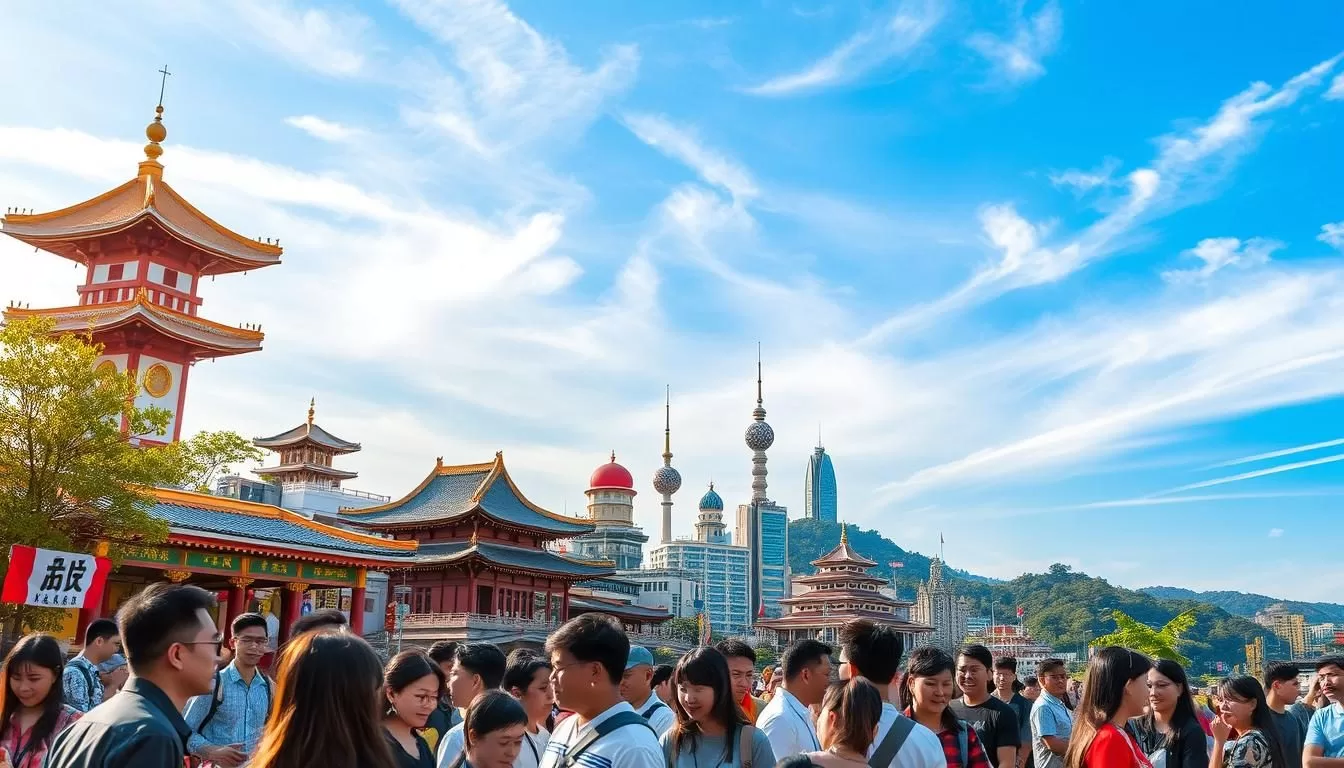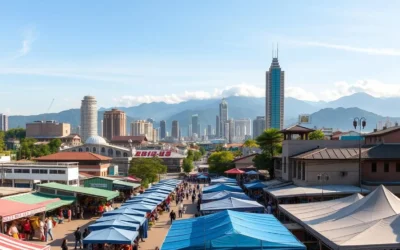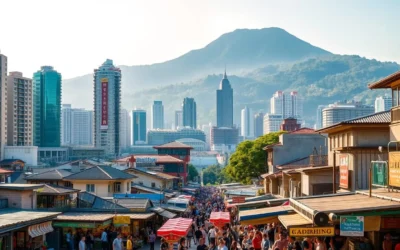✓ Accommodations✓ Flights✓ Rental Cars
As you explore Hsinchu County, you’ll discover a region rich in cultural heritage and linguistic diversity. Located in northwestern Taiwan, this area is not only known for its technological advancements, often referred to as Taiwan’s Silicon Valley, but also for its complex linguistic landscape.
The official language of Taiwan is Mandarin Chinese, which has been the standard since 1945. However, the linguistic environment in Hsinchu County is particularly notable for its strong presence of Hakka speakers alongside Taiwanese Hokkien.
Understanding the languages spoken in this region will enhance your experience, whether you’re visiting for business, tourism, or academic purposes. This guide will walk you through the language situation in Hsinchu County, providing insights into its historical context and current usage patterns.
The Linguistic Landscape of Hsinchu County
As you explore Hsinchu County, you’ll discover a unique linguistic landscape that distinguishes it from other regions in Taiwan. The county’s language distribution is characterized by a rich tapestry of languages, with Hakka being a prominent feature.
Geographic and Demographic Context
Hsinchu County is located in a region where Hakka is widely spoken, and its demographic makeup has contributed to the preservation of this language. The county is part of Taiwan’s “Hakka belt,” along with neighboring Miaoli, and has a significant population of Hakka ancestry.
The geographic concentration of Hakka people in Hsinchu County has helped maintain the language’s presence in daily life, making it one of the few places in Taiwan where Hakka remains widely spoken.
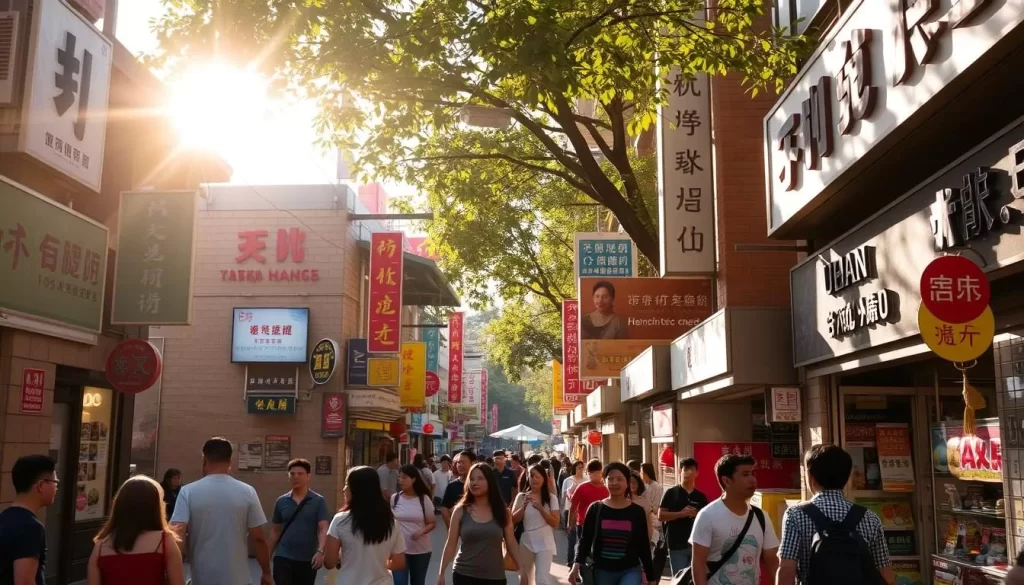
Language Distribution in Hsinchu County
The language distribution in Hsinchu County reflects Taiwan’s broader linguistic pattern, but with a significantly higher percentage of Hakka speakers. While Mandarin Chinese is the official language and is spoken by virtually everyone in the county, Hakka is commonly used in daily life.
In Hsinchu County, you’ll find that approximately 6-7% of Taiwan’s overall population speaks Hakka at home, but this percentage is much higher in the county. Additionally, you’ll encounter Taiwanese Hokkien speakers throughout the county, creating a trilingual environment in many communities.
Mandarin Chinese: The Official Language
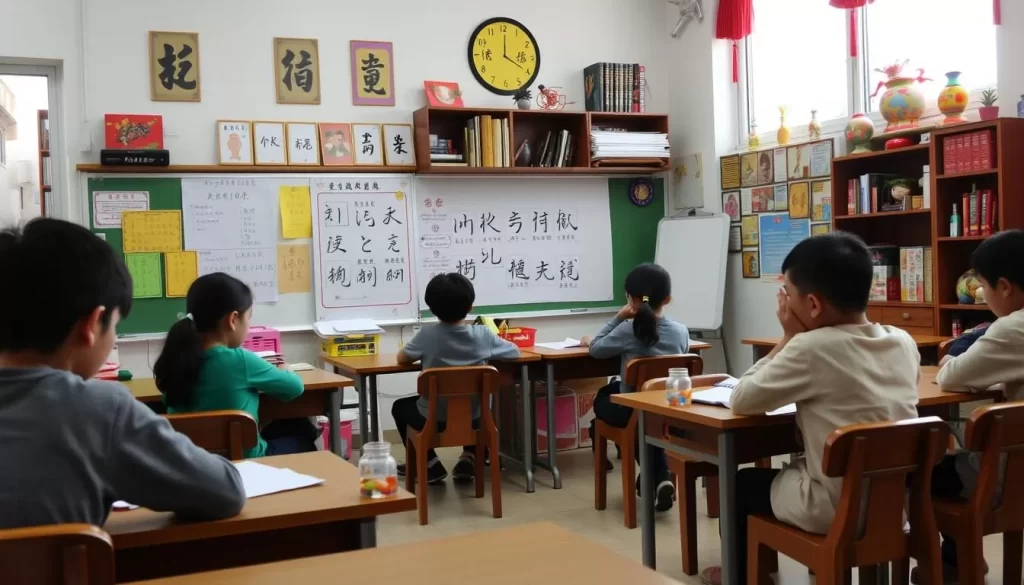
Mandarin Chinese, known as Guoyu or “National Language” in Taiwan, is the predominant language used in Hsinchu County. As the official language of Taiwan, it plays a vital role in government, education, media, and daily life.
Status and Usage in Hsinchu County
In Hsinchu County, Mandarin Chinese is the primary language used for official purposes, education, and inter-ethnic communication. It’s widely used in government services, schools, and media outlets, ensuring that everyone can communicate effectively.
The widespread use of Mandarin Chinese has facilitated the integration of different ethnic groups within the county, promoting a cohesive community.
Taiwanese Mandarin Characteristics
Taiwanese Mandarin has distinct characteristics that differentiate it from the Mandarin spoken in mainland China. One notable difference is in pronunciation, where the zh-, ch-, and sh- sounds are often pronounced as z-, c-, and s-, resulting in a softer sound.
The dialect has also been influenced by other local languages, such as Hokkien and Hakka, as well as Japanese, contributing to its unique vocabulary and expressions. For instance, Taiwanese Mandarin includes loanwords from Japanese and terms derived from local languages.
Furthermore, the tonal patterns of Taiwanese Mandarin tend to be flatter and less pronounced compared to the Mandarin spoken in mainland China, which can make it easier for learners to understand.
Hakka: The Cultural Heritage of Hsinchu
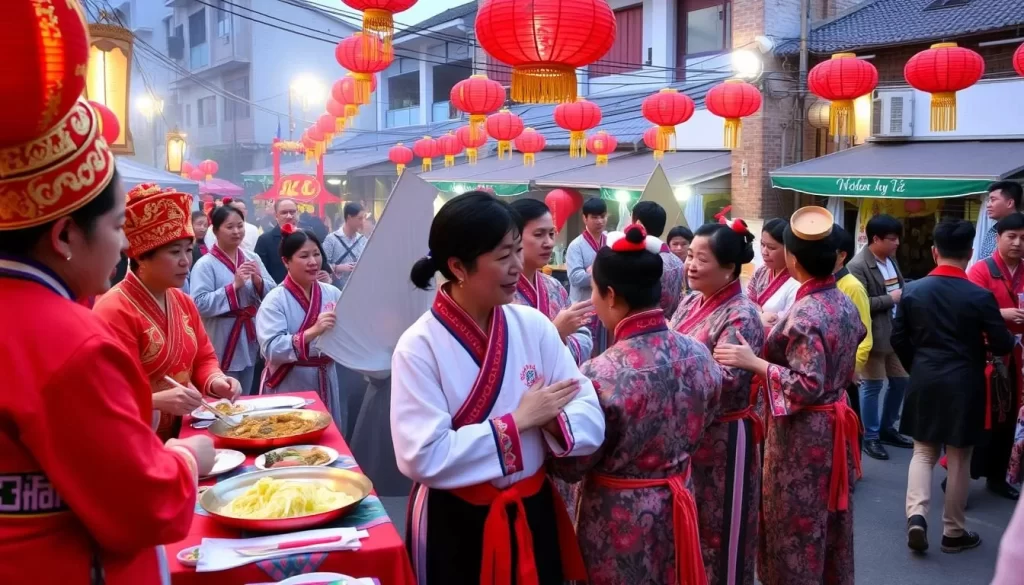
In Hsinchu County, the Hakka language is more than just a means of communication; it’s a bridge to the past. The Hakka community has a rich cultural heritage that is intricately woven into the fabric of daily life, traditions, and collective identity.
Hakka Population and Distribution
The Hakka population in Hsinchu County is significant, with many residents tracing their ancestry back to Hakka origins. The distribution of Hakka people is widespread across the county, with certain areas having a higher concentration of Hakka communities. This demographic distribution plays a crucial role in shaping the local culture and language landscape.
Hakka Dialects in Hsinchu County
Hsinchu County is home to various Hakka dialects, which are recognized and maintained by the government through initiatives led by the Hakka Affairs Council. The government currently recognizes five Hakka dialects in Taiwan, with some sources counting Sixian and South Sixian independently, making it six. The preservation of these dialects is crucial for maintaining the cultural diversity of the region.
Cultural Significance and Preservation Efforts
The Hakka language embodies a cultural heritage that connects residents with centuries of history and traditions. To preserve this heritage, numerous efforts are underway, including dedicated Hakka cultural centers, language classes, and community events. The Hakka Affairs Council has implemented programs to document, preserve, and promote local Hakka dialects, recognizing their cultural significance and vulnerability. You can experience these preservation efforts firsthand by visiting cultural festivals and interacting with local Hakka communities.
By engaging with the Hakka language and culture, you become part of a larger narrative that blends tradition with modernity. The current language revitalization efforts in Hsinchu County are a testament to the community’s commitment to preserving its linguistic heritage.
Taiwanese Hokkien in Hsinchu County

In Hsinchu County, you’ll discover the fascinating world of Taiwanese Hokkien, a language that reflects the region’s diverse heritage. Taiwanese Hokkien is an integral part of the linguistic landscape, coexisting with Hakka and Mandarin in a complex social ecosystem.
Usage Patterns and Speakers
Taiwanese Hokkien has a significant presence in Hsinchu County, with a blend of Quanzhou and Zhangzhou Hokkien dialects. Although it’s undergone a revival since the 1990s “Mother Tongue Revival Movement,” its long-term future remains uncertain, especially among younger generations who increasingly favor Mandarin.
The language is still widely spoken, particularly in informal settings and among older residents. However, the influence of Mandarin is evident, with many residents practicing code-switching depending on the context or topic of conversation.
Relationship with Hakka and Mandarin
The relationship between Taiwanese Hokkien, Hakka, and Mandarin in Hsinchu County is complex and reflects broader historical patterns of migration and language policy in Taiwan. While Hakka and Taiwanese Hokkien have distinct origins, centuries of contact have resulted in shared vocabulary and expressions unique to this region.
Mandarin is gaining ground among younger speakers, yet Taiwanese Hokkien and Hakka remain crucial for cultural identity and local connection. This dynamic linguistic environment showcases the adaptability and resilience of languages in the face of changing social and cultural contexts.
Hsinchu County, Taiwan: Official and Widely Spoken Languages in Context
As you explore Hsinchu County, Taiwan, you’ll discover a rich linguistic landscape shaped by its history and cultural diversity. The county’s language profile is influenced by its geographic location and demographic makeup, making it a fascinating case study.
Historical Language Policies
Hsinchu County’s language policies have evolved significantly over the years. Following the lifting of martial law in 1987, there was a shift towards allowing the use of native languages in public life and education. This change marked a significant turning point in the county’s linguistic history, enabling the promotion of local languages alongside Mandarin Chinese, the official language of Taiwan.
The government’s efforts to protect and revitalize local languages gained momentum in the 2000s, with the introduction of local language instruction in elementary schools and the establishment of public media outlets dedicated to Hakka and Formosan languages.
| Year | Language Policy/Event |
|---|---|
| 1987 | Lifting of martial law; native languages allowed in public life and education |
| 2000s | Introduction of local language instruction in schools; establishment of public media for local languages |
| 2017 | Formosan languages recognized as official languages |
Current Language Revitalization Efforts
In Hsinchu County today, numerous language revitalization efforts are underway, particularly for the Hakka language. The Hakka Affairs Council has implemented various programs, including language classes, cultural events, and media initiatives, to promote the use of Hakka.
Local schools have also incorporated Hakka language instruction into their curricula, reflecting the community’s commitment to preserving its cultural heritage. Despite these efforts, the dominance of Mandarin and English in digital communication poses a challenge to language revitalization in the 21st century.
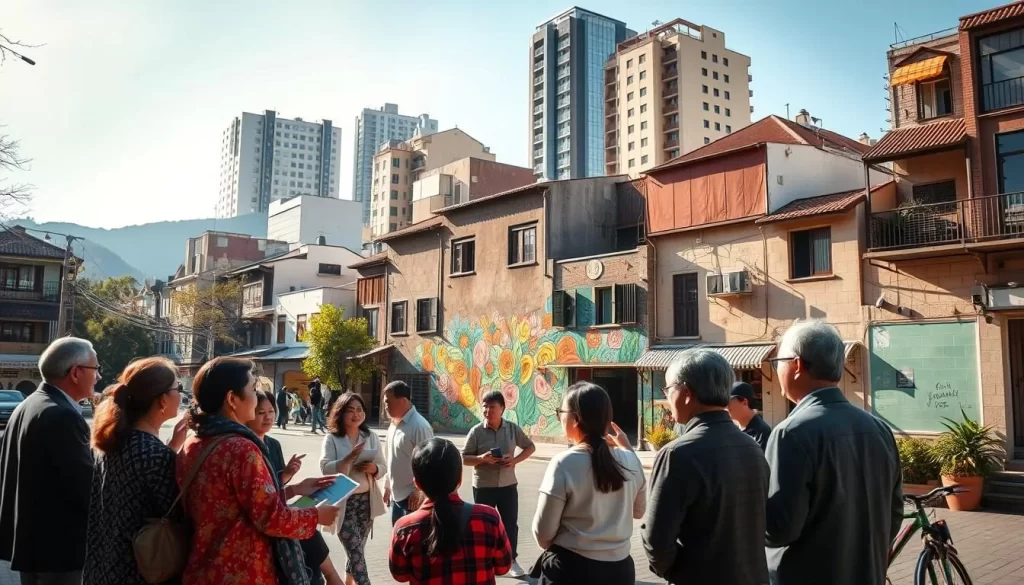
Indigenous Languages in Hsinchu Region
You’re about to uncover the fascinating world of indigenous languages in Hsinchu, a region that boasts a complex linguistic tapestry. The indigenous languages here are part of the Formosan language family, which is a significant part of Taiwan’s cultural heritage.

Atayal and Other Aboriginal Languages
The Atayal language is one of the prominent indigenous languages in Hsinchu County. Other significant languages include Paiwan and Bunun, each with its unique characteristics and cultural significance. Although Mandarin Chinese is culturally dominant, efforts have been made to preserve these indigenous languages, including the introduction of Formosan mother tongue education in schools.
Preservation Challenges and Initiatives
Despite the efforts to preserve indigenous languages, they face significant challenges, including the dominance of Mandarin in education, media, and economic life. However, initiatives such as language documentation projects, elder-youth language partnerships, and cultural immersion programs are underway to reverse language shift. The Council of Indigenous Peoples has also implemented measures to support Atayal language preservation, including standardized writing systems and teacher training programs.
For those interested in supporting language diversity, there are opportunities to engage with indigenous language preservation initiatives in Hsinchu County through cultural tourism, language learning programs, and community-based events. You can make a difference by participating in these efforts.
Conclusion
Hsinchu County’s linguistic diversity is a testament to Taiwan’s complex history and cultural identity. The region’s languages, including Mandarin Chinese, Hakka, Taiwanese Hokkien, and indigenous languages, create a unique cultural landscape that reflects the county’s history and heritage.
As you explore Hsinchu County, understanding the interplay between these languages will enrich your experience. While Mandarin Chinese is the official language and widely used in most situations, you will encounter Hakka more frequently than in other parts of Taiwan, particularly in rural areas and traditional settings.
The use of traditional Chinese characters in writing Sinitic languages, including Mandarin, Taiwanese Hokkien, and Hakka, is maintained by the Ministry of Education’s standards. This linguistic diversity is a valuable part of Taiwan’s cultural identity, and efforts to preserve and promote these languages are crucial for maintaining the region’s cultural heritage.
In Hsinchu County, you will witness how multiple languages can coexist, reflecting broader patterns of Taiwan’s history and cultural evolution. As Taiwan continues to balance national unity with cultural diversity, Hsinchu County stands as an important example of successful linguistic coexistence.
The above is subject to change.
Check back often to TRAVEL.COM for the latest travel tips and deals.
